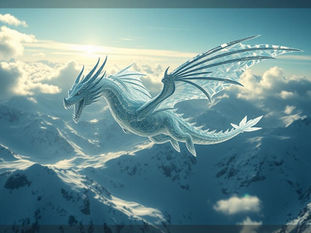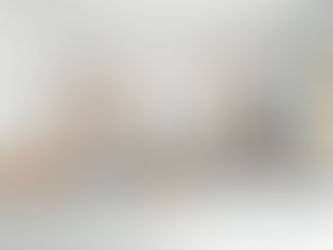
Creating Images That Look Like Others in Midjourney V7
May 8
5 min read
0
20
0

Want to generate images in Midjourney V7 that match a specific look? Maybe you saw an image online and loved its style, or you want your generations to look more like a reference photo.
Midjourney V7 offers several ways to guide its output to achieve visual similarity or adopt a particular aesthetic. This guide breaks down the key methods, from basic description to advanced style techniques.
Start Simple: Using Image Descriptions
The most basic way to reference an existing image is using the `/describe` command. Here is how it works:
First, upload the image you want to reference to Discord. Just click the image icon and choose your file.
Once uploaded, click on the image. Then click the "Description" button (it often appears like a button under the image preview).
Midjourney analyzes the image and gives you a few different text prompts based on its analysis. These prompts describe the main visual elements.
Review the generated prompts. Choose the one that seems most relevant to the subject and overall look of your image.
You can often add your own keywords or a specific style at the beginning of the prompt given by `/describe`. For example, add "cinematic photo of..."
Run the chosen prompt.
The results from this first level will get you an image with a similar subject and maybe a similar overall feel, but don't expect perfect precision. It's a starting point based on descriptive text.
Getting More Precise: Using Image Prompts
To make Midjourney generate images that are much closer to a specific photo, you need to include the photo itself directly in your prompt. This tells Midjourney to use the image data as a strong influence.
Here's how:
Get the image link. You can message the original image you uploaded to yourself in Discord, or right-click (or long-press) the image and select "Copy Image Address".
Start your prompt with the image link. Paste the link right at the beginning of your `/imagine` command.
Add your text description after the image link. For example: ` your text description `
Use the Image Weight parameter (`--iw`). This is a crucial setting. Values range from 0.5 to 3.0.
A lower `--iw` value (like 0.5) makes Midjourney rely more on your text words.
A higher `--iw` value (like 3.0) makes Midjourney prioritize matching the visual look of the image you provided.
For close precision, use `--iw 3` at the end of your prompt. Example: ` your text description --iw 3 `
Adding the image link and `--iw 3` tells Midjourney to make the new image look as much like the source image as possible, while still considering your text prompt. The results will be much more aligned visually.
Enhance your image creation workflow and consistently get the looks you want. Consider the Midjourney Automation Suite from TitanXT. It can streamline your tasks and offer advanced features to help you achieve precise results more easily.
Influencing the Vibe: Style References
Sometimes you don't want your image to replicate a photo exactly, but you want it to capture the *style* or *mood* of another image. This is where style references come in. You use one image to influence the aesthetic of another generation.
Instead of putting the image link *in* the prompt like `--iw`, you use the `--sref` parameter with the image link. Example: `[P] your text description --sref `
In some Midjourney interfaces, you can drag an image directly into a specific "Style Reference" box.
When you use `--sref`, Midjourney will create an image based on your text description, but it will try to apply the color tones, lighting, composition feel, or overall aesthetic of the image you provided as a style reference. The subject comes from your text, the style comes from the reference image.
Combining Image and Style References
Yes, you can use both! You can put an *image* into your prompt with `--iw` to influence the core look AND use a different *image* with `--sref` to influence the style or tone.
Example: ` your text prompt --iw 3 --sref [LINK url="your-style-image.jpg"] `
In this case, the image with `--iw 3` will have a stronger impact on the overall generation, but the colors and general mood will still be influenced by the image used with `--sref`.
Creating Your Own Style: Moodboards
For a more consistent style over many generations, you can create a personalized moodboard within Midjourney. This trains the AI on your specific aesthetic preferences.
Go to your Midjourney settings or profile section (sometimes accessed via a command like `/settings`).
Look for an option related to "Personalize" or "Moodboard". If you don't have one, you may need to create it.
To create one, upload a collection of images that represent the style you like. The more images you upload (at least 20 is recommended), the better Midjourney can understand your taste.
Once your moodboard is set up, you can reference it in your prompts. There will likely be a specific parameter or option to "Use in Prompt".
Using your moodboard will influence your generations to align with the collective style of the images you've curated.
Whether you're aiming for photo-realism, a specific art style, or just want certain color palettes, having tools that help manage your creative assets makes a difference. Check out the Midjourney Automation Suite from TitanXT for powerful ways to enhance your workflow and manage references.
Fine-Tuning Your Look: Profile Ranking
Beyond specific image or style references, you can also train Midjourney on your general aesthetic preferences through Profile Ranking.
Look for the "Profile Ranker" option, often available through a command or your Midjourney web profile.
Midjourney will show you pairs of images.
Simply choose the image in each pair that you like best.
There is no right or wrong choice; you are teaching the AI your personal taste in composition, color, and style.
You usually need to rank a certain number of images (often 200+) before your profile is fully established and influences your generations.
Using Style Codes
Midjourney images can sometimes be associated with a unique "style code" (often shared in forums or available on images you generate). These are like condensed representations of the visual style of a specific image.
You can use a style code with the `--style` or `--sref` parameter (depending on which applies to the specific code) at the end of your prompt. Example: `[P] your text prompt --style code [/P]`
Using a style code will apply the specific aesthetic captured by that code to your new generation, regardless of the subject of your text prompt.
Conclusion
Midjourney V7 offers a range of powerful tools to help you move beyond basic text prompts and create images that match specific visuals or styles. By using image references with `--iw`, style references with `--sref`, building moodboards, training your profile, and utilizing style codes, you gain incredible control over the final output's appearance.
Experiment with these techniques to find the best way to achieve the exact visual look you want.
Take control of your image generation process and explore advanced features for consistency and efficiency. Learn more about the Midjourney Automation Suite from TitanXT.






